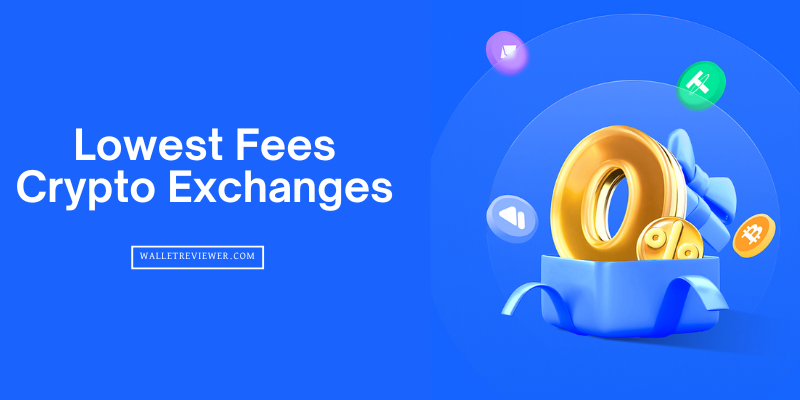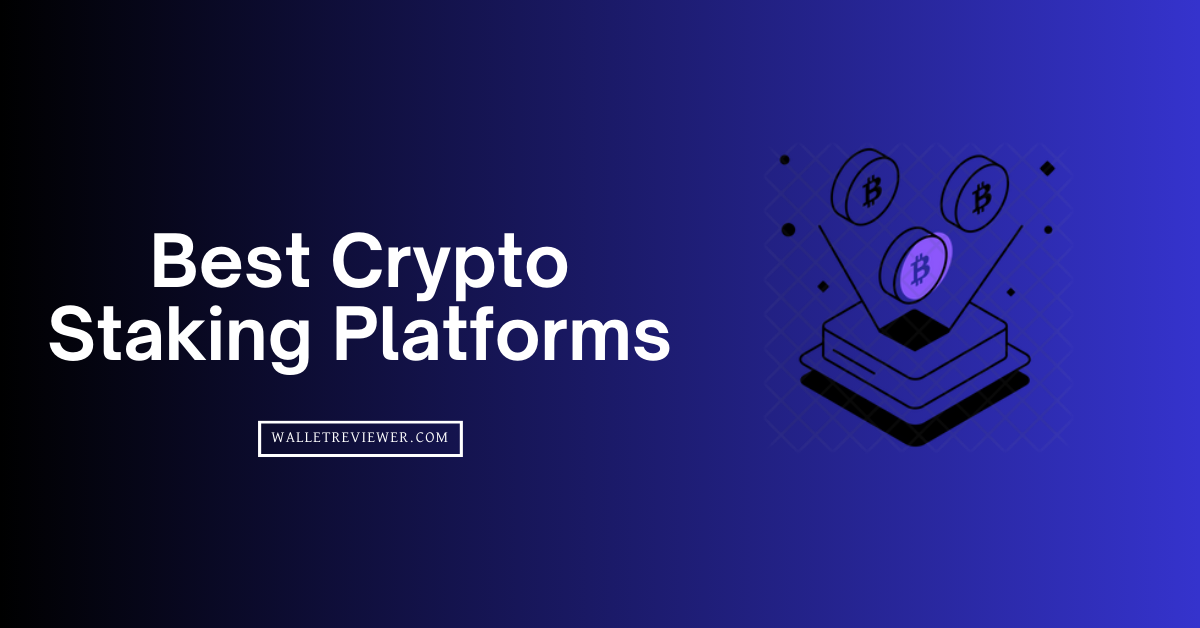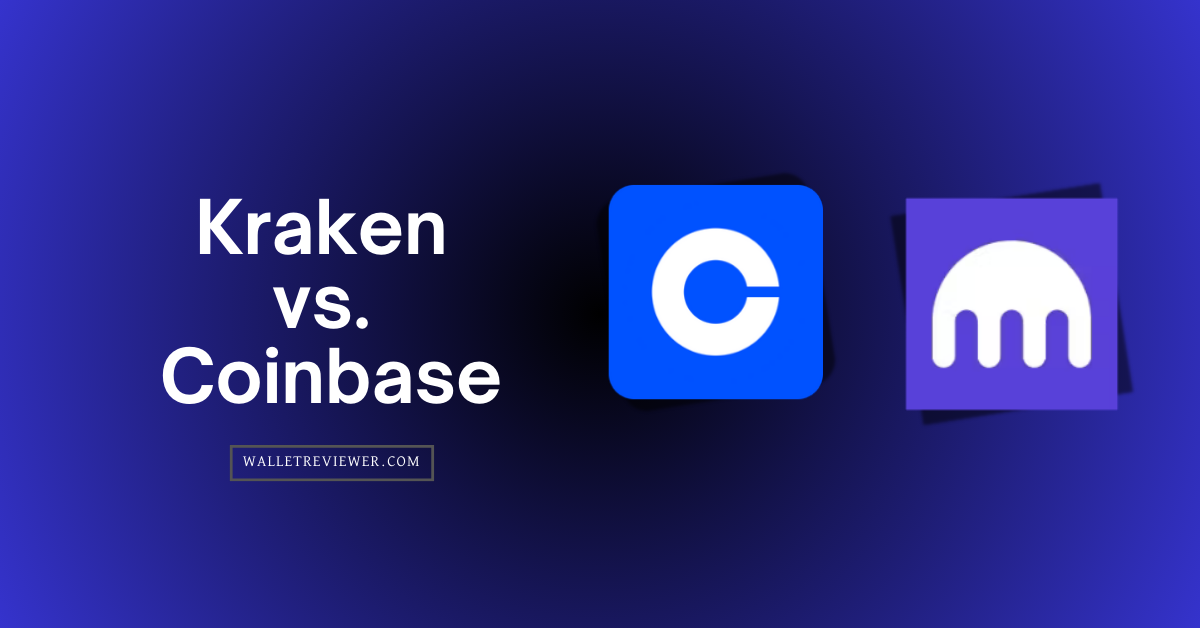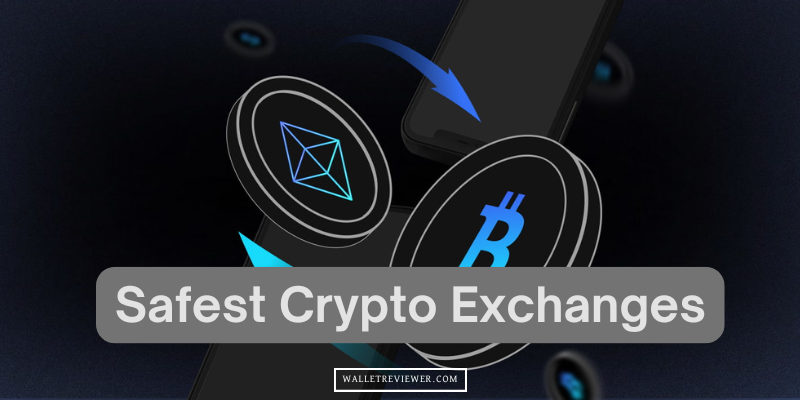In this guide, you’ll find the 7 lowest fee crypto exchanges that offer the cheapest spot and futures trading fees, low withdrawal costs, and zero hidden charges.
You know, fees can quietly eat into your profits. That’s why we researched dozens of platforms and compared them based on trading fee structures, coin support, futures contracts, withdrawal fees, and real-time performance.
We actually checked the live rates, terms, and user policies on each exchange. We also focused on exchanges that offer zero maker fees, discounts through native tokens, and transparent fee charts, not just marketing claims.
Let’s review the best crypto exchanges with low fees…
Note: Use my affiliate links to register and get an additional fee discount between 10-30%, depending on the exchange.
Best Crypto Exchanges With Low Fees in 2025
We have reviewed over 30 different cheapest crypto exchanges based on their trading and withdrawal fees. We have also looked at any hidden fees, including spread and slippage. Here are our top 7 best crypto exchanges with the lowest fees:
- MEXC: Top zero-fee crypto trading app (zero withdrawal fees) (U.S. supported without KYC)
- CoinEx: Best low-fee exchange for 200x leverage trading (trade anonymously without KYC)
- Bitget: Best for trading futures contracts cheaply
- Gate.io: Best for trading altcoins without trading fees (BTC pairs have zero fees)
- KuCoin: Safest exchange to buy crypto cheaply
- Binance: High-liquidity exchange with the lowest fees (low fees and zero slippage)
- HTX: Crypto exchange with low withdrawal fees (zero BEP20 network fee)
Best Lowest-Fee Crypto Exchanges Compared
Here is the quick comparison between the best crypto exchanges with low fees:
| Exchange | Supported Coins | Spot Fees | Futures Fees | Affiliate Links Fee Discount |
|---|---|---|---|---|
| MEXC | 3,000+ | Maker 0%, Taker 0.05% | Maker 0%, Taker 0.02% (0.01% with MX token) | 10% |
| CoinEx | 2,300+ | Maker 0.05%, Taker 0.05% | Maker 0.01%, Taker 0.04% | 30% |
| Bitget | 1,200+ | Maker & Taker 0.08%, 20% off with BGB | Maker 0.02%, Taker 0.06% | 20% |
| Gate.io | 2,500+ | 0.1%; BTC pairs often zero fee | Maker 0.02%, Taker 0.05% | 20% |
| KuCoin | 800+ | 0.10% standard; 0.08% with KCS; some higher | Maker 0.02%, Taker 0.06%; VIP discounts | 10% |
| Binance | 500+ | 0.10% standard; 25% off with BNB | Low fees; varies by tier and BNB discount | 10% |
| HTX | 2,000+ | Around 0.10%; promotions on some networks | Maker 0.02%–0.05%, Taker 0.02%–0.05% | 30% |
Low-Cost Crypto Exchanges for 2025: Cheapest Ways to Buy Bitcoin
Our choice: 2 of the best crypto exchanges with low fees
(Guide) Best Cheapest Crypto Exchanges: Crypto Trading Brokers With Lowest Fees
Now that you’ve seen the lowest fee crypto exchanges, take a look at our extensive reviews to find the platform with the cheapest transaction fees for trading, deposit, and withdrawals.
1. MEXC: Overall Best Low-Fee Crypto Trading Platform
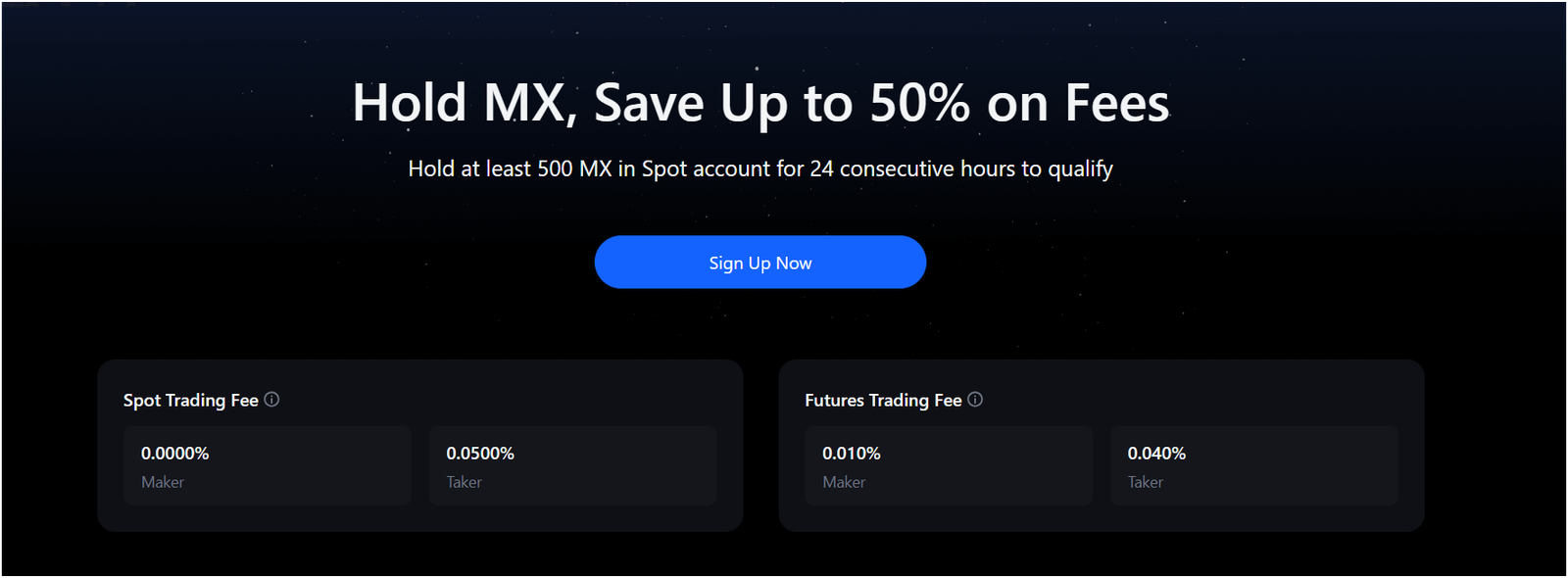
MEXC is the #1 crypto exchange with the lowest fees in the industry. It is best known for its zero maker trading fees on both spot and futures.
You pay 0% maker fee on all eligible pairs. Standard taker fees are 0.05% for spot and 0.01%‑0.02% for futures, depending on VIP level and MX token discounts. The platform checks MX holdings three times per day; if you hold at least 500 MX tokens for 24 hours, you get automatic 0% fee status on eligible spot and futures pairs.
MEXC serves over 50 million users in 170+ countries with daily trading volume above $2.5 billion. The platform supports 2,900+ cryptocurrencies and more than 3,000 spot trading pairs. You can trade spot, futures (up to 200× leverage), ETFs, margin, and P2P markets. (Read MEXC review)
Note: MEXC is also a KYC-free crypto exchange, so you can trade with just an email (100% privacy).
MEXC Fee Structure
| Fee Type | Exact Cost Details |
|---|---|
| Spot trading fees | Maker 0%, Taker 0.05% (can be reduced via MX token) |
| Futures trading fees | Maker 0%, Taker 0.01% (promotional) or 0.02% standard |
| Deposit fees | Crypto deposits 0%; Fiat deposits vary (0–3.5%) |
| Withdrawal fees | BTC 0.00003–0.00005 BTC; Zero using BNB chai network |
| Any hidden fees | No hidden fees. Possible slippage and spread on trades. Spreads widen during volatility. |
2. CoinEx: Best low-fee exchange for 200x leverage trading

CoinEx is a global cryptocurrency exchange established in 2017. It presents itself as “Your Crypto Trading Expert” and supports more than 2,300 different crypto assets.
You can buy cryptos on CoinEx using over 60 fiat currencies, with support for credit card payments and other payment options. They claim their matching engine is very fast, enabling high-speed trading, and they support spot trading, margin trading, and futures as part of their offering.
They also offer savings/earn-type products: for example, a “Financial Account” or “Flexible Savings” option where you can put idle crypto to work and earn interest with daily compounding. On the transparency side, CoinEx states that it holds proof-of-reserves, displays on-chain wallet data, and claims a 100% reserve ratio for user assets.
CoinEx Fee Structure
| Fee Type | Exact Cost Details |
|---|---|
| Spot trading fees | Maker 0.5%, Taker 0.5% |
| Futures trading fees | Maker 0.01%, Taker 0.02% (promotional) or 0.04% standard |
| Deposit fees | Crypto deposits 0%; Fiat deposits vary (0–2%) |
| Withdrawal fees | BTC 0.00001–0.00002 BTC |
| Any hidden fees | No hidden fees |
3. Bitget: Best Lowest-Fee Crypto Exchange for Futures Trading
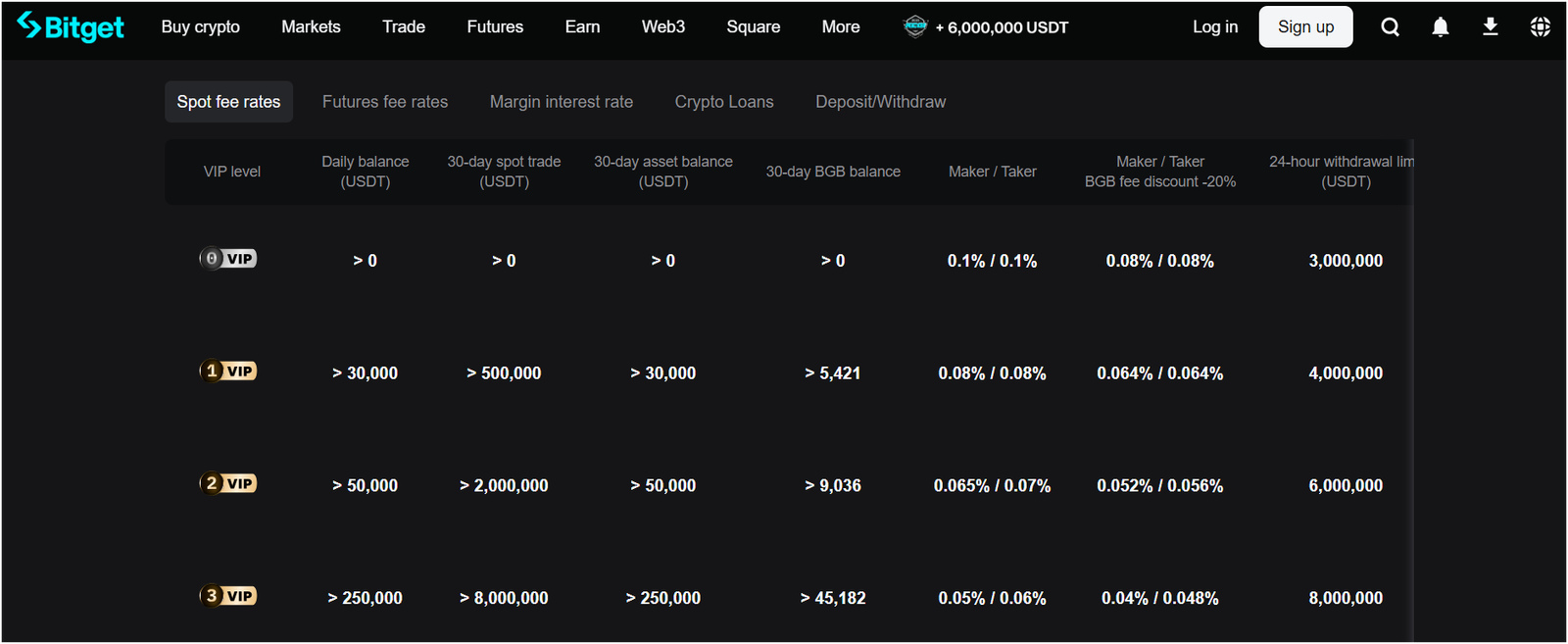
Bitget is often called one of the cheapest crypto exchanges today. It started in 2018 and now serves over 100 million users worldwide. It charges a flat 0.1% spot trading fee for both maker and taker orders.
If you use its native token BGB to pay fees, you get a 20% discount, bringing your spot fee down to 0.08%. Futures trading fees are 0.02% for makers and 0.06% for takers at base VIP‑0 level. Futures fees may drop further for high‑volume VIP users (e.g. maker 0.01%, taker 0.02%).
Bitget’s GetGas feature lets you pay gas fees across chains using BGB token. You don’t need native tokens like ETH or BNB to pay gas. They also have profit‑share copy‑trading fees: followers pay 10–20% of profit to elite traders when trade closes.
Bitget Fees Structure
| Fee Type | Exact Fee Rate / Details |
|---|---|
| Spot Trading | Maker 0.10%, Taker 0.10%. If paying with BGB token, fees drop to 0.08% |
| Futures Trading | Maker 0.02%, Taker 0.06%. VIP volume tiers reduce this (e.g. maker 0.01%, taker 0.02%) |
| Deposit (crypto) | 0.00% (free). Fiat deposit usually free; third‑party provider fees may apply |
| Withdrawal (crypto) | Dynamic. Example: BTC ≈ 0.00005 BTC (BTC network), or ≈ 0.000005 BTC (BEP‑20 network) |
4. Gate.io: Best Crypto Exchange With Low Fees for Altcoins
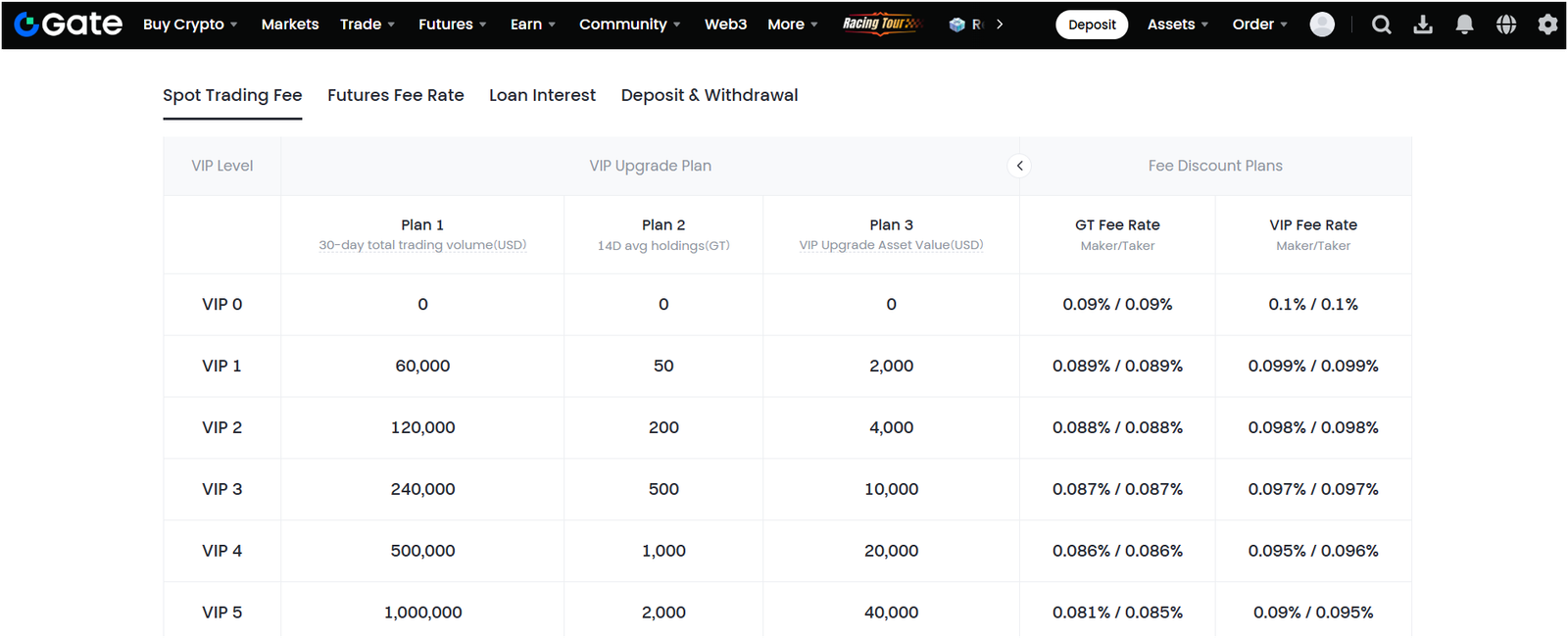
Gate.io is widely known for its low trading fees and tiered discount system. Spot trading fees start at 0.1% maker-taker. Futures trading fees are 0.015% maker and 0.050% taker at entry VIP status.
You pay zero fees on crypto deposits. Native GT token holders get further discounts—spot fee may drop to 0.09% for maker and taker at VIP 0 when paying in GT. High-volume traders may reach VIP levels with trading volume and GT holdings to cut fees dramatically, even to 0% maker and ~0.02% taker at VIP 16.
Gate.io uses a points system (“Point”) equivalent to USDT to offset futures taker fees. Withdrawal fees can change dynamically during processing, and some users have reported actual withdrawal charges far above the displayed fee. (Read: how to convert fiat to crypto)
Gate.io Fees Structure
| Fee Type | Rate / Notes |
|---|---|
| Spot trading fees | Base: 0.10% maker / 0.10% taker. With GT debit: ~0.09% / 0.09% at VIP 0. Lower at higher VIP tiers |
| Futures trading fees | Maker: 0.015%, Taker: 0.050% (can be reduced by Point, e.g. taker partly paid by Point) |
| Deposit fees | 0% for all cryptocurrency deposits. Fiat deposit via third‑party incur variable fees (e.g. ~2–5%) |
| Withdrawal fees | Vary by coin and network |
5. KuCoin: Safest exchange to buy crypto cheaply
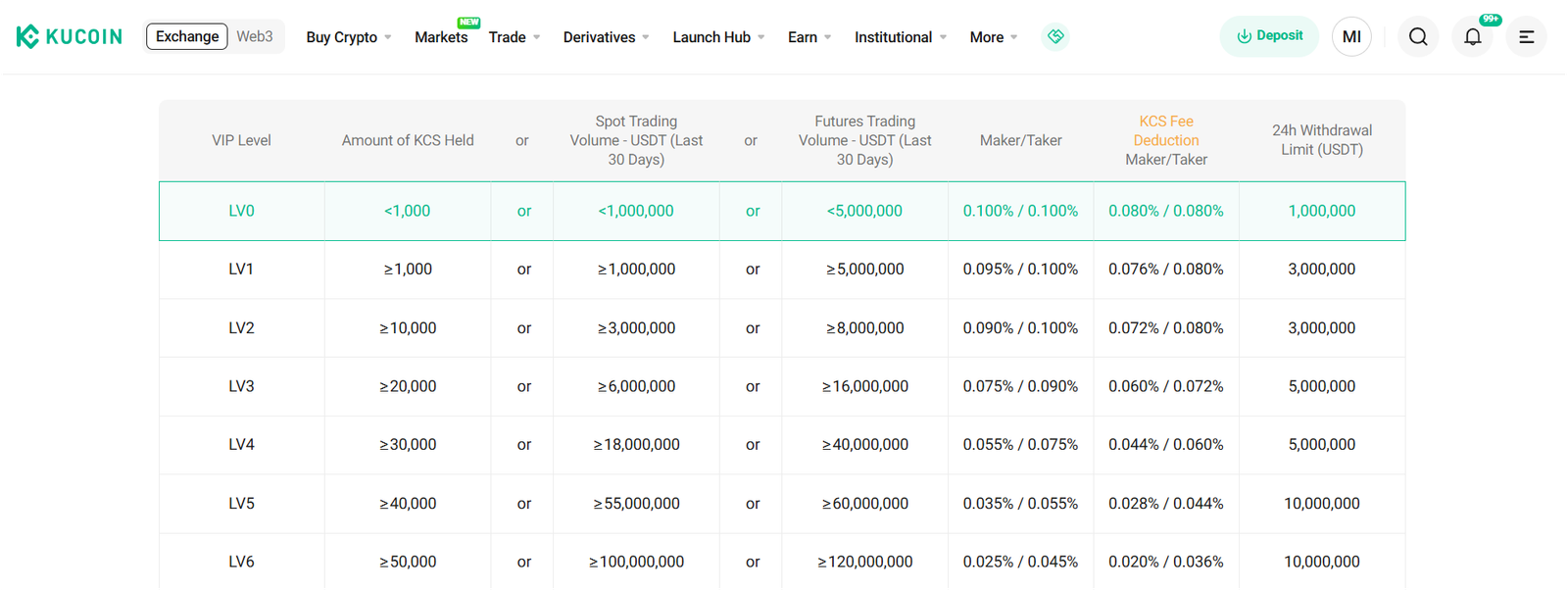
KuCoin is a cryptocurrency exchange based in Seychelles. You can trade over 800 coins in more than 1,200 pairs.
KuCoin is known for very low fees. Spot trading fees start at 0.10% for both maker and taker. If you hold KuCoin Token (KCS) and pay fees in KCS, you get a 20% discount, reducing the fee to 0.08%. If you trade large volumes or hold more KCS, you can reach VIP levels with lower fees. Some makers even receive rebates (negative fees at tier 12 as low as –0.005%), and the taker fee is reduced to 0.0025%.
Futures trading uses base fees of 0.02% (maker) and 0.06% (taker), and high-volume VIPs can reach –0.008% maker / 0.025% taker. KuCoin does not charge fees for crypto deposits. You can earn discounts and additional features through the VIP program and KCS holding.
KuCoin Fee Structure
| Fee Type | Exact Fee |
|---|---|
| Spot trading fees | Maker 0.10%, Taker 0.10% (base). With KCS pay discount ⇒ 0.08% each. |
| Futures fees | Maker 0.02%, Taker 0.06% (base). VIP tiers reduce to –0.008% maker / 0.025% taker at highest level. |
| Deposit fees | Crypto deposits: free. Fiat deposits: e.g. SEPA Euro deposit ~1 EUR; third‑party buys ~1–4.5% depending on method. |
| Withdrawal fees | Varies by network |
6. Binance: High-liquidity exchange with the lowest fees
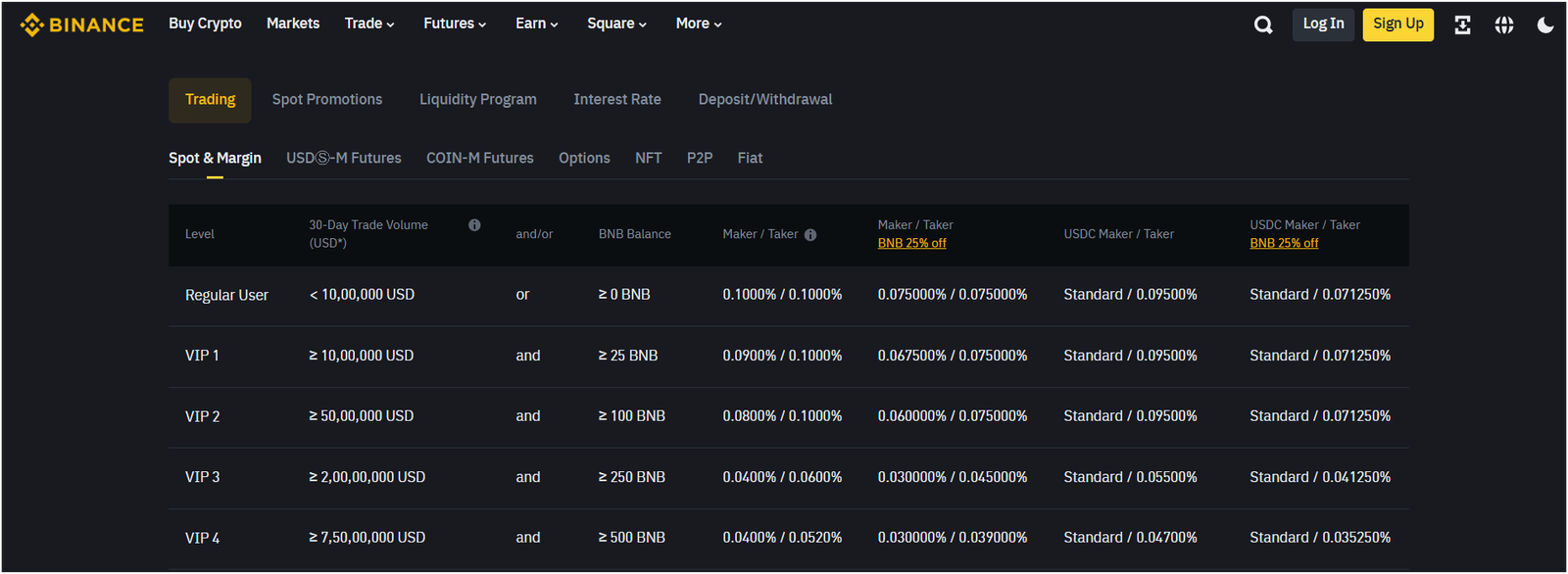
Binance is among the cheapest crypto exchanges globally. Spot trading fees start at 0.10% maker and taker for users with under ~$1 million monthly volume and no BNB holdings. You can cut that by 25% if you pay trading fees in BNB token, lowering it to 0.075%.
Binance also runs a VIP program from VIP 0 to VIP 9. Higher tiers require increasing 30‑day volume and BNB balance, and fees drop accordingly—top users can get as low as 0.0110% maker / 0.0230% taker before discount.
Futures trading fees are set at 0.02% maker / 0.04% taker (USDⓈ‑M futures), and 0.01% maker / 0.05% taker for COIN‑M futures. A 10% BNB discount also applies.
Deposits of crypto carry zero fee. Fiat deposits vary by method and region—card payments can carry around 2% fee, SEPA transfers in EUR may cost ~1 €.
Binance Fees Structure
| Fee Type | Fee Details |
|---|---|
| Spot trading | 0.10% maker / 0.10% taker (VIP 0). Reduce to ~0.075% by paying in BNB. VIP tiers down to 0.0110% / 0.0230%. |
| Futures trading | USDⓈ‑M: 0.02% maker / 0.04% taker; COIN‑M: 0.01% / 0.05%. BNB gives 10% discount. |
| Deposit fees | Crypto deposits: free. Fiat deposit fee depends on region; credit/debit card ~2%, SEPA EUR ~1 €. |
| Withdrawal fees | Varibale |
| Hidden fees | No hidden spot or deposit fees. Margin interest applies per asset. No cancellation or inactivity fees noted. |
7. HTX: Crypto exchange with low withdrawal fees
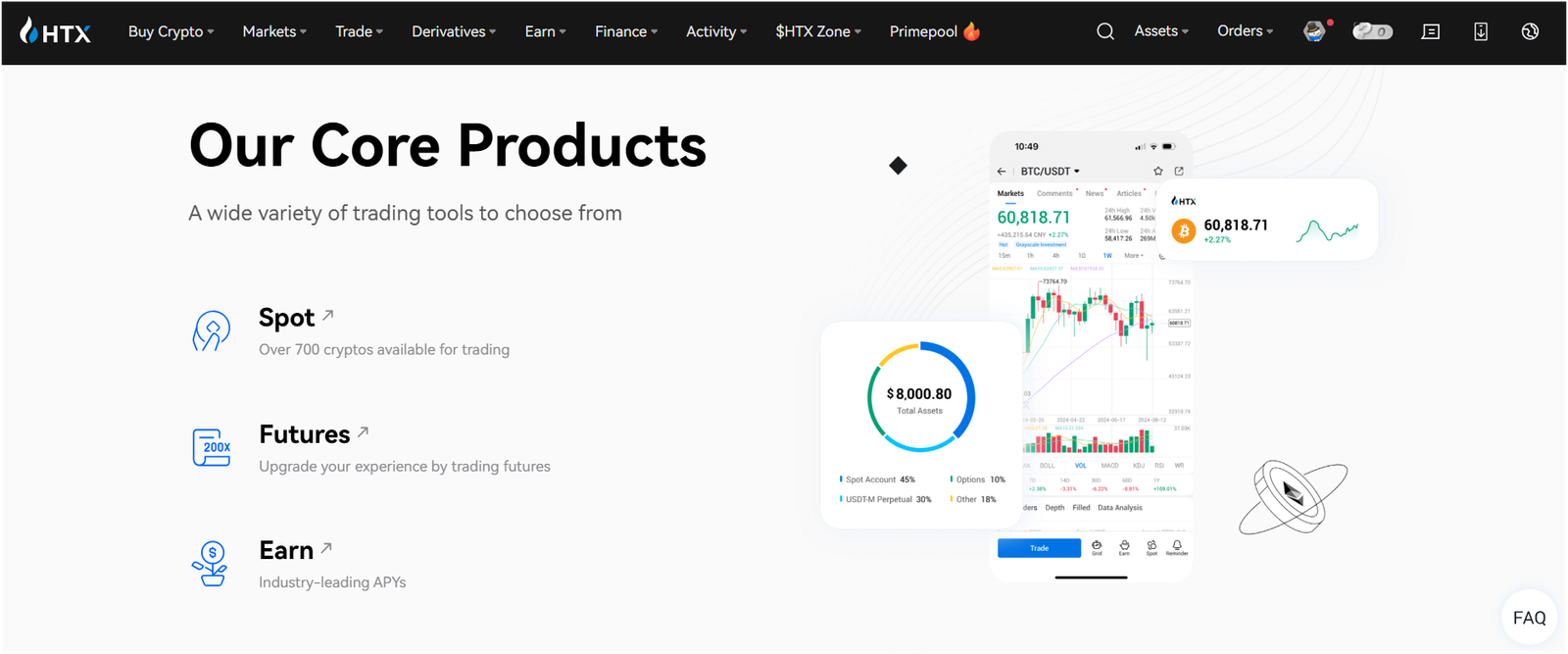
HTX (formerly Huobi) is a Seychelles‑based exchange founded in 2013. You pay zero fees for crypto deposits. Spot trading charges 0.10 % maker and taker fee. Futures trades cost 0.02 % maker, 0.06 % taker.
Fiat deposits via SEPA cost 0.15 % plus 1 EUR, GBP Faster Payments 0.15 % plus 1 GBP, and USD bank wire transfers are free. Credit or debit card deposits cost 2.9 % + 0.10 (Skrill) or up to ~3.5 % for Visa/Mastercard.
HTX Fees Structure
| Fee Type | HTX Fee Details |
|---|---|
| Spot trading fees | Maker 0.10 %, Taker 0.10 % |
| Futures fees | Maker 0.02 %, Taker 0.06 %. Volume/HT token holders can reduce further |
| Deposit fees | Crypto deposit is free. Fiat: SEPA 0.15 % +1 EUR; Faster Payments GBP 0.15 % +1 GBP; USD bank wires free; card 2.9 %+0.10 or 3.5 %+ ≈3 USD |
| Withdrawal fees | Variable |
How to Trade Crypto With Minimal Fees?
You can trade crypto on MEXC with minimal fees. The standard spot trading fees are 0% maker and 0.05% taker, while futures trading fees are 0% maker and 0.01% taker. You can reduce these even further by holding at least 500 MX tokens in your spot account for 24 hours, which gives you a 50% discount the next day. Another option is to enable MX Deduction, which lets you pay fees with MX tokens at a 20% discount. Use my referral code or link to get an extra 20% fee discount on all your trades.
Types of Fees Charged by Crypto Trading Platforms
Maker/Taker Fees
Crypto exchanges charge maker and taker fees when you place trades. A maker is someone who adds liquidity by placing a limit order that does not get filled immediately. A taker removes liquidity by placing a market order that fills instantly. Exchanges usually give lower fees to makers because they help keep the order book active.
For example, many of the best crypto exchanges with low fees charge around 0.1% for takers and 0.08% or less for makers. These fees can change based on your trading volume or if you hold the exchange’s native token. Most users pay these fees every time they buy or sell crypto.
Futures Trading Fees
When you trade futures on a crypto exchange, you also pay maker and taker fees, but they are usually much lower than spot trading. Most exchanges charge between 0.02% to 0.05% for futures trades. Futures fees are applied every time you open or close a position.
Some exchanges also offer fee discounts if you trade large volumes. These fees matter a lot because futures traders often make many trades in a short time. Even small fees can add up quickly, so it’s important to choose a platform with low futures trading costs.
Read: Best futures crypto exchanges
Deposit and Withdrawal Fees
Crypto exchanges may charge fees when you deposit or withdraw funds. Most platforms do not charge anything for crypto deposits. But some exchanges charge fixed network fees when you withdraw crypto. These fees depend on the type of coin and the network load.
For example, Bitcoin withdrawals may cost more than other coins. Fiat withdrawals or deposits using banks may also include extra fees, which vary by country and method. You should always check the latest withdrawal fees before moving your funds, as they can affect your total cost.
Spread
Spread is the price difference between the buying price and the selling price of a cryptocurrency. Exchanges do not always show this fee directly, but it is included in the final price. When the spread is wide, you pay more to buy and get less when you sell. This often happens on low-volume coins or during high market volatility.
Market makers and the exchange benefit from the spread. Even if a platform claims “zero trading fees,” it can still make money through spreads. That is why checking the actual buy and sell prices is very important.
Overnight Funding Fees
Overnight funding fees apply when you hold futures or margin positions open for more than 24 hours. These fees are used to balance the difference between long and short positions. If more people are buying, longs may pay shorts. If more people are selling, shorts may pay longs.
The amount changes every 8 or 12 hours, depending on the platform. This fee is not fixed and depends on market conditions. If you hold positions for a long time, these funding rates can become costly. It’s better to monitor the funding rate before keeping trades open overnight.
Related: Best altcoin exchanges
How to Choose a Low-Fee Crypto Exchange to Trade without Fees?
To choose the best crypto exchange with low fees, you need to consider these factors…
- Check Maker and Taker Fees: Look at the exchange’s trading fees. Some of the best crypto exchanges with low fees offer 0% maker fees or very low taker fees. Choose one where both are cheap. Fees usually depend on how much you trade each month or if you hold the exchange’s token.
- Watch for Hidden Spreads: Some lowest-fee crypto exchanges offer zero trading charges but use wide spreads. This means you pay more to buy and get less when selling. Always compare the buy and sell prices. If the gap is big, you may lose money even if the trading fee looks free.
- Compare Withdrawal Charges: Most exchanges charge a fixed fee when you withdraw crypto. These fees depend on the coin and blockchain network. Always check the exact fee before withdrawing. A low trading fee means nothing if you lose money while moving your crypto out.
- Choose Platforms with Fee Discounts: Some exchanges give lower fees to users who hold their native token. Others offer discounts if you trade large volumes. Read the fee tier list. If you plan to trade a lot, a platform with rewards or loyalty programs can save you money.
- Look for Free Deposits: Make sure the platform offers free crypto deposits. Some also offer zero-fee bank transfers for fiat money. If there’s a deposit charge, it will increase your total trading cost. Free and fast deposit options are always better.
- Compare Futures Trading Costs: If you want to trade futures, check the maker and taker fees for futures contracts. These fees are usually lower than spot trading. Some exchanges even offer zero fees for futures trading, which helps active traders save more.
- Check Supported Networks: Some platforms support cheaper blockchain networks like TRON or Arbitrum for deposits and withdrawals. Using these can reduce your network fees. Always choose an exchange that supports multiple chains, so you can avoid expensive ones like Ethereum when moving your funds.
- Avoid Unnecessary Features: Some crypto exchanges charge fees for using tools like copy trading, bots, or extra services. If you don’t need these tools, pick a simple platform that doesn’t include them in its cost. Stick to basic trading if your goal is low-cost transactions.
Read: Safest crypto exchanges
How to Avoid Hidden Fees When Trading Crypto?
- Always Check Trading Fee Page
Before trading, go to the exchange’s official fee page. Look at spot and futures fees. Check both maker and taker rates. Some exchanges say “zero fees” but charge in other ways. Never trust only promotions. Read the fine print carefully. - Compare Buy and Sell Prices
Look at the spread between the buying and selling price. If the gap is big, you’re paying more without seeing it clearly. This hidden fee is common in zero-fee platforms. Always check live prices to know the real cost. - Watch Withdrawal Fees
Many exchanges charge high fixed fees to withdraw crypto. These fees change based on the network. Use coins with lower withdrawal charges. Avoid platforms that charge high network fees or extra service fees during withdrawals. - Avoid Costly Blockchain Networks
If you withdraw using expensive blockchains like Ethereum, you may pay high gas fees. Use cheaper networks like TRON or BNB Chain whenever possible. Choose exchanges that support many networks to reduce blockchain costs. - Don’t Use Auto-Convert or Quick Buy Tools
Tools like “Instant Buy” or “One-Click Convert” often include higher spreads or service charges. These are not always shown clearly. Use regular spot trading to avoid paying more through hidden fees. - Read About Funding and Holding Costs
If you trade futures or use margin, check the funding rate and interest fees. These are often charged every few hours. Many users ignore them and lose money over time. Only hold positions when necessary. - Avoid Frequent Small Withdrawals
If you withdraw small amounts often, fees will pile up. Combine your funds and make fewer, larger withdrawals to reduce total charges. Check the fee every time before confirming the transaction. - Don’t Ignore Inactive Account Fees
Some platforms charge if your account stays inactive for months. Read the user terms. Log in and use the account regularly to avoid such penalties. Keep your balance safe and active.
Related: Best free crypto sign-up bonuses
Where to buy crypto without fees?
You can buy crypto without paying trading fees on MEXC. The platform offers 0% maker fees and very low taker fees, but for certain spot pairs, the taker fee is also reduced to 0%, meaning you can trade completely free.
If you hold 500 MX tokens for 24 hours, you get a 50% discount on taker fees, and enabling MX Deduction gives another 20% discount. MEXC often runs zero-fee promotions for popular trading pairs, which lets you buy and sell without paying any fee at all. Also, you can use my referral code or link to save even more on your trades.
Read more: Best crypto exchanges for day trading
FAQs: Lowest Trading Fees Exchanges for Bitcoin
Which exchanges has lowest fees?
MEXC and Bitget both have some of the lowest trading fees in the market. On MEXC, maker fees are 0% and taker fees start at just 0.05% for spot trades, with further discounts available. Bitget also offers 0.1% maker fees and the same taker fees, especially for futures trading, making both platforms ideal for cost-conscious traders.
Is there any crypto exchange with zero withdrawal fees?
Yes, MEXC offers zero withdrawal fees for several cryptocurrencies, especially popular ones like USDT on specific networks. The exact fee depends on the blockchain you choose for withdrawal. Always check MEXC’s fee schedule before withdrawing to make sure you use the zero-fee option.
What are the cheapest ways to buy Bitcoin?
One of the cheapest ways to buy Bitcoin is through MEXC, which offers 0% maker fees and very low taker fees. By holding MX tokens or enabling MX Deduction, you can cut your fees even further. Using my referral code or link can also give you an extra 20% discount on trading fees.
What are the low-fee cryptocurrency exchanges?
Some of the best low-fee cryptocurrency exchanges are MEXC, Bitget, KuCoin, and Binance. These platforms offer 0.1% maker fees on many markets and very low taker fees, especially when using their native tokens for discounts. They are widely used by traders who want to minimize costs and maximize profits.
What is the best low-cost crypto exchange for 2025?
MEXC is the best low-cost crypto exchange for most traders. It offers 0% maker and taker fees across both spot and futures markets.
Even without MX, maker fees remain at 0% and taker fees at just 0.05% spot and 0.01–0.02% futures. There are no deposit fees. Its fee structure beats many competitors without volume requirements. It also lists clearly which pairs are ineligible for fee discounts, adding transparency. MEXC delivers unmatched simplicity and low cost.
Which is the cheapest crypto exchange with zero withdrawal fees?
Among the best crypto exchanges with low fees, the zero withdrawal fees in 2025 are MEXC, Bitget, and Gate.io. MEXC offers free withdrawals on select assets like USDT on TRC‑20, though others incur minimal blockchain fees. Bitget and Gate.io also provide zero withdrawal fees for certain tokens.
These offers vary by token and network and depend on temporary promotions. On many platforms, these zero withdrawal fee options help avoid typical blockchain costs, making these exchanges particularly cost‑effective for users withdrawing supported tokens.
What is the crypto with the lowest transaction fees?
The cheapest blockchain network for transactions is Solana, with average fees of about $0.00025 per transaction. Other low‑fee networks include TON ($0.01), Polygon (MATIC) ($0.005–$0.02), and BNB Chain, typically around $0.04–$0.05.
For zero‑fee options, TRON allows one free transaction per day per account and often charges effectively nothing, while Nano and IOTA use fee‑free architectures with no gas costs. These make them ideal for micropayments and high‑volume transfers with minimal cost
How to transfer large amounts of crypto cheaply?
To transfer large crypto amounts cheaply, use blockchains with ultra‑low fees such as Solana, Polygon, BNB Chain, TRON, Nano, or IOTA. Schedule transfers during off‑peak hours to avoid network congestion surcharges.
Use centralized exchanges or OTC desks to move large volumes—some exchanges waive or reduce fees for large withdrawals or internal transfers. Always confirm recipient supports the same network.
Use slower gas settings if time is flexible. Splitting into internal exchange transfers avoids blockchain fees entirely. This approach cuts costs substantially.
Is there any crypto exchange without any trading charges?
Yes, MEXC offers zero trading charges for both spot and futures markets if you hold at least 500 MX tokens. Maker and taker fees drop to 0% on eligible pairs. Even without MX, maker fees are kept at 0% and taker at just 0.05%.
No volume thresholds are required beyond MX holdings. This sets MEXC apart in offering truly fee‑free trading on many instruments. The clear eligibility list and low barrier make it the only major exchange providing no trading charges for most users.
What are the best crypto mobile apps with the lowest fees?
Top mobile crypto apps with the lowest fees include Bitget, Binance, and KuCoin. Bitget offers minimal taker and maker fees, plus occasional zero withdrawal promotions. Binance charges 0.10% maker/taker on spot (discounts via BNB) and very low futures fees (0.02% maker / 0.04% taker). KuCoin charges 0.10% both sides, reduced withthe KCS token or VIP volume tiers.
